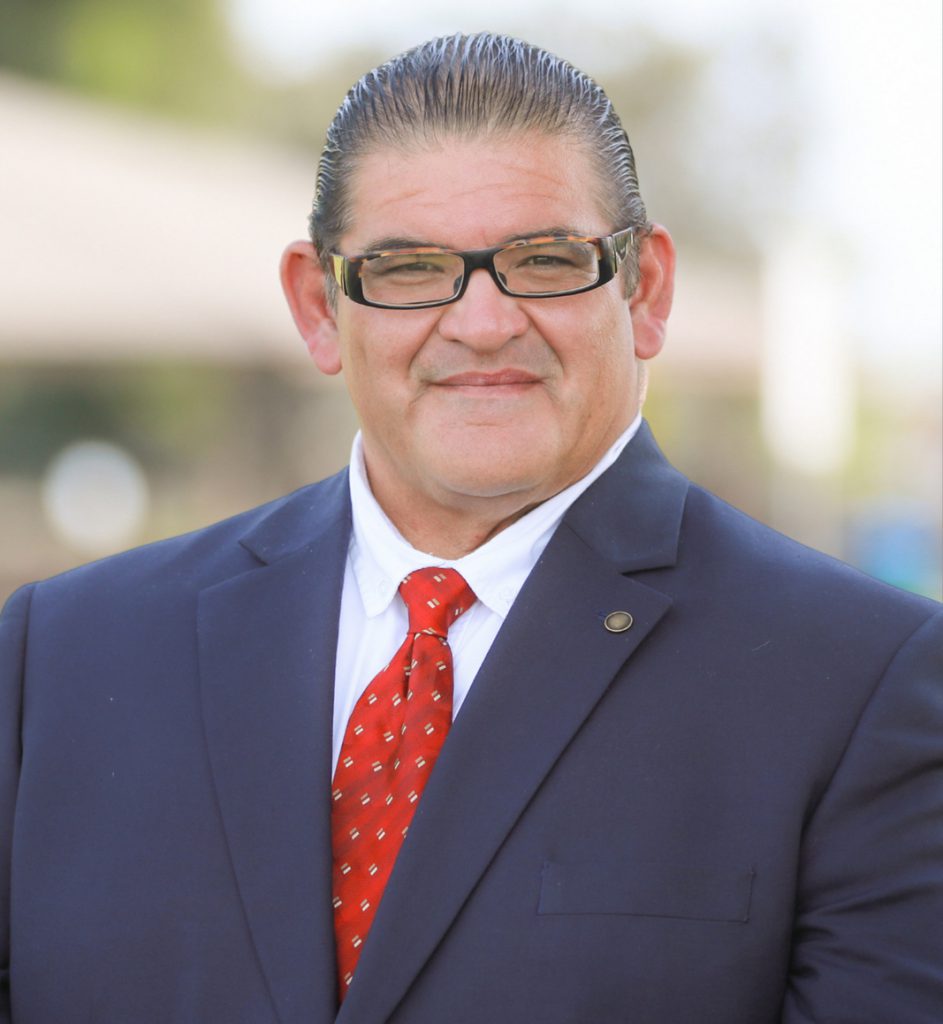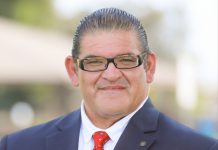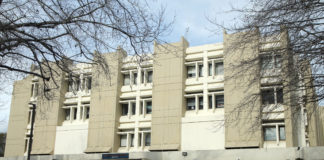Shaping Watsonville’s Future Together
By Watsonville Mayor Maria Orozco
Our 2025 State of the City on Oct. 22 was a meaningful moment to pause, reflect, and look forward—to recognize how far we’ve come and how we’re shaping a brighter future for Watsonville together.

This year’s theme, Shaping Watsonville’s Future Together, speaks to who we are: a resilient community that collaborates, cares for one another, and takes pride in the place we call home. Every accomplishment we celebrate starts with that shared commitment.
Over the past year, we focused on investing in our neighborhoods and the everyday experiences of our residents. Green Valley Road now includes ADA-accessible curb ramps, new safety features, and smoother pavement. We added traffic-calming improvements across our city—from flashing beacons and new stop signs to clearer street markings near schools—all to keep our families safe. And with upgrades to more than 3,000 streetlights, our neighborhoods are becoming brighter and more welcoming for everyone.
We also took meaningful steps to address housing and homelessness. The City Council adopted Watsonville’s first-ever Homelessness Plan—a major milestone that aligns our goals with regional partners to reduce suffering on our streets and connect people with real pathways to stability. Our expanded Homeless Outreach Pilot Program, in collaboration with the Community Action Board, continues to build relationships and link individuals to vital services and support.
More affordable housing is becoming a reality across the city. This year alone, we added 125 new homes at Tabasa Gardens and Sparrow Terrace, 80 homes at Cienega Heights, and seven homes along Airport Boulevard—with 10 more coming at 558 Main Street.
Through Hillcrest Estates and Sunshine Gardens, seven families—including three City employees—became first-time homeowners right here in Watsonville. We updated our Affordable Housing Ordinance to prioritize local residents and workforce, and secure nearly $38 million to preserve 132 affordable apartments for the long term. These are investments in stability, dignity, and opportunity.
Our local economy continues to grow and diversify. We issued 87 new business licenses and spotlighted local entrepreneurs through our Mayor on the Move series—because supporting those who create jobs here strengthens our entire community. We were honored to receive the 2025 Helen Putnam Award for Excellence for Watsonville Brillante, the stunning mosaic mural at Civic Plaza. And we are now pursuing a Downtown Art
District designation to continue elevating arts and culture as drivers of economic vitality and community pride.
We also took important steps to maintain strong finances and strengthen our workforce.
The approved $309+ million budget for the next two years reflects responsible stewardship of public dollars and includes major investments in capital improvements—from wastewater treatment upgrades to water system enhancements and landfill expansion that protects capacity for decades to come. We began a citywide compensation study focused on attracting and retaining talented employees who deliver essential services every day.
Critical systems citywide are getting modernized to improve emergency response, efficiency, and infrastructure management. Measure Y funds have made a new fire truck and upgrades at Fire Station 1 possible—while crime has dropped significantly: 25% fewer violent crimes, 27% fewer property crimes, and a 9% overall decrease. And exciting improvements are happening at Ramsay Park as we deliver new fields, playgrounds, and accessible amenities for families to enjoy.
As we look ahead, there is even more to be excited about: Noche de Brillo—a brand-new winter celebration—debuts on Dec. 14. Renovations to the City Plaza, a reimagined Library Rooftop, Main Street sidewalk improvements, and the launch of the Mío Car sharing program are all on the way soon. Long-term planning through the 2050 General Plan Update and the Downtown Watsonville Specific Plan continues to guide smart growth around housing, transportation, and sustainability for generations to come.
Most importantly, I want to express my deep gratitude to the more than 430 dedicated City of Watsonville employees who serve our community with heart and professionalism every
single day. Whether responding to emergencies, caring for our youth, maintaining our parks and streets, or ensuring essential operations keep running—they are the backbone of our success.
And to our residents—thank you for your voice, your partnership, and your belief in what’s possible when we work together. Your hopes for this community fuel our work and your trust guides us forward.
I’m proud of what we’ve accomplished—and even more excited for what is yet to come.
The future of Watsonville is bright, and we are building it together.
•••
Planning for the future
By Supervisor Felipe Hernandez
As we approach the end of the year, I want to take a moment to reflect on the work our community is doing together—from advancing clean energy and public safety, to planning our County’s future, to making sure no one goes hungry during tough times. The strength of Santa Cruz County lies in our ability to come together, listen to one another, and act with compassion and foresight.

Community Dialogue on Clean Energy and Safety
On Oct. 27, I hosted a community town hall to discuss the County’s proposed Battery Energy Storage System (BESS) ordinance, an important step in ensuring that as we move toward clean energy, we do so safely and responsibly.
Battery energy storage systems are essential to California’s transition to renewable power. They store excess solar and wind energy during the day and return it to the grid when demand peaks. This helps prevent power outages, strengthens reliability, and advances our climate goals. But as we’ve seen from incidents like the Moss Landing fire, strong safety measures and local control are essential.
The proposed ordinance—which the Board of Supervisors will consider on Nov. 18—ensures local control, transparent permitting, and strict adherence to national fire safety standards, including those outlined in Senate Bill 283, the Clean Energy Safety Act of 2025.
Our community meeting brought together county staff, environmental leaders, and public safety experts, including Stephanie Hansen from the Planning Division, Kris Damhorst from the Commission on the Environment, and Deputy Fire Marshal Chris Walters. Residents asked thoughtful questions and shared their concerns and ideas. The meeting ran 40 minutes longer than planned, a testament to our community’s engagement and the value of open dialogue.
I want to thank everyone who participated. Whether you support or oppose aspects of the proposal, your voice helps shape a policy that balances clean energy progress with community safety.
Planning for the Future—Together
Looking ahead, the County is developing our next Strategic Plan, which will guide our priorities for the coming years. On Nov. 4, the Board of Supervisors approved six focus areas based on community input:
• Housing and Infrastructure
• Community Care and Resilience
• Health, Well-being, and Connection
• Safety and Justice
• Environment, Climate, and Sustainability
• Economy and Job Growth
These focus areas reflect what we’ve heard from residents across the county—a desire for affordable housing, reliable infrastructure, stronger social safety nets, environmental stewardship, and equitable opportunity.
The next phase of the process will involve setting measurable goals and strategies under each category. Public engagement remains central. Your input will continue to shape this plan so that it reflects the diverse needs and aspirations of our communities.
Standing Together to Keep Food on the Table
Finally, as the federal government shutdown continues, thousands of local families are facing food insecurity due to the suspension of SNAP (CalFresh) benefits. More than 33,000 residents in Santa Cruz County rely on these benefits, which bring over $6.5 million in food support into our local economy each month.
In response, the County of Santa Cruz has declared a local emergency and committed $500,000 to Second Harvest Food Bank to expand emergency food distribution. We are joined in this regional effort by the Santa Cruz County Office of Education, the City of Watsonville, the City of Santa Cruz, and the Community Foundation Santa Cruz County, together pledging more than $1 million to sustain food access during the shutdown.
This partnership represents the best of who we are—neighbors helping neighbors, local agencies stepping up, and a community that refuses to let anyone go hungry.
If you or someone you know is affected, please reach out. Call the Food Hotline at 831.662.0991 or visit the Second Harvest Food Bank of Santa Cruz County at 800 Ohlone Parkway, Watsonville or thefoodbank.org, or consider donating or volunteering. Every bit helps, and together we can make sure every family has what they need through the holidays and beyond.
Moving Forward
Santa Cruz County continues to show what it means to be resilient—to plan ahead, care for one another, and face challenges with unity and purpose. Whether we’re managing growth, addressing climate change, or supporting families in crisis, our progress depends on collaboration and community engagement.
I am grateful for your continued participation, feedback, and compassion. Let’s keep working together to build Santa Cruz County that is stronger, safer, and more equitable for all.
Felipe HERNANDEZ, 4th District
Santa Cruz County Supervisor
Fe**************@***************ca.gov
831.454.2200 (Santa Cruz Office)
831.763.8766 (Watsonville Office)












